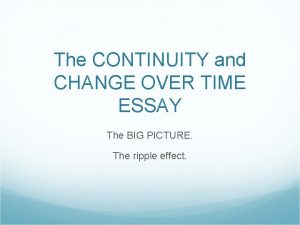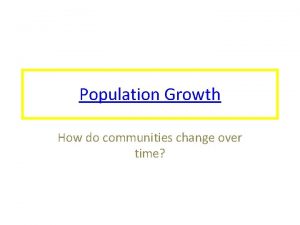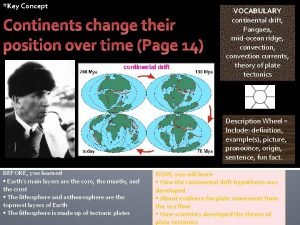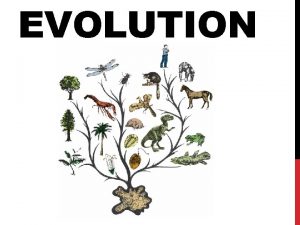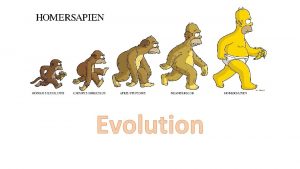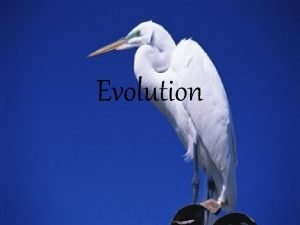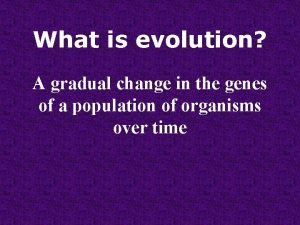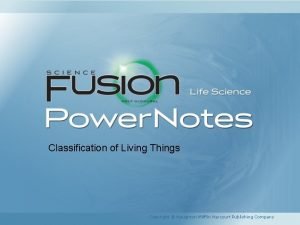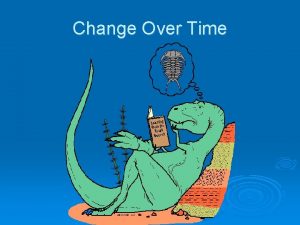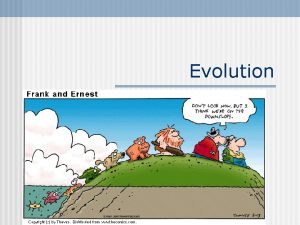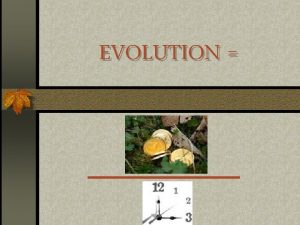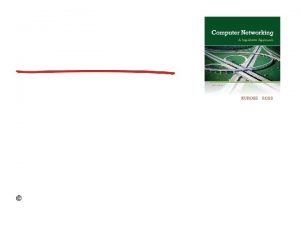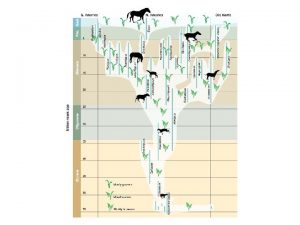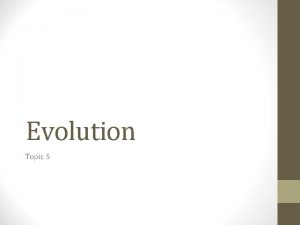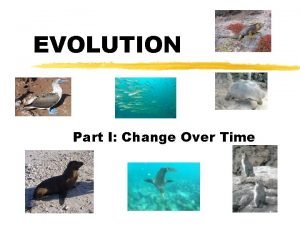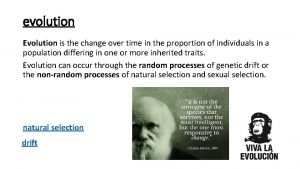Change Over Time Evolution A cumulative change in












- Slides: 12

Change Over Time

Evolution • A cumulative change in the characteristics of organisms or populations from generation to generation – Slow process – Many small changes collect to form a new species – Species - group of the same organism, organisms that can breed together

Charles Darwin • Observed the main mechanism of evolution on his travels around the world. Natural Selection

Galapagos Islands • Island chain off the coast of Peru • Islands vary in terrain and vegetation • Darwin studied finches on several of the islands

Galapagos Finches • Many different species are found on the island – Each finch is well adapted to their island habitat – How? Why?


Darwin’s Theory of Evolution by Natural Selection (OCVSRS) • (Potential for) Overpopulation Unchecked reproduction causes exponential population growth.

Darwin’s Theory of Evolution by Natural Selection (OCVSRS) • Competition - for resources occurs because resources are limited (space, clean water, food, etc…) – Ex. Predator Prey relationship

Darwin’s Theory of Evolution by Natural Selection (OCVSRS) • Variation with in a population. – Some organisms may be… • • faster or slower, stronger or weaker, more resistant to a disease Blend in with surroundings better • Etc.

Darwin’s Theory of Evolution by Natural Selection (OCVSRS) • Selection - some variations increase the chance of survival because they – Out run a predator – Hide from a predator – Find clean water – Use different food sources – Etc. .

Darwin’s Theory of Evolution by Natural Selection (OCVSRS) • Reproduction - organisms that are selected for survival can pass on their traits – Over time the frequency of favorable traits will increase in the population

Darwin’s Theory of Evolution by Natural Selection (OCVSRS) • Speciation - Process of forming a new species – Over time many changes accumulate – If populations are different enough that they can no longer mate with each other. The two populations are considered different species.
 Continuity and change over time example
Continuity and change over time example Communities change over time
Communities change over time A change of position over time
A change of position over time The gradual change in a species over time
The gradual change in a species over time Words change over time
Words change over time The change in the hereditary features over time
The change in the hereditary features over time A gradual change in a community over time.
A gradual change in a community over time. Evolution
Evolution Change in hereditary features over time
Change in hereditary features over time The gradual change in a species over time is
The gradual change in a species over time is Why do classification systems change over time?
Why do classification systems change over time? Start time end time and elapsed time
Start time end time and elapsed time Over the mountain over the plains
Over the mountain over the plains
